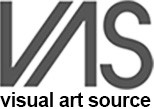MATTHEW CARTER
hellequinharlequinclown
July 12 – August 23, 2014 | Artist’s reception: Saturday, July 12, 6:00 - 8:00 p.m.
Luis De Jesus Los Angeles is very pleased to present MATTHEW CARTER in his first solo exhibition with the gallery, titled hellequinharlequinclown, on view from July 12 through August 23, 2014. An artist’s reception will be held on Saturday, July 12th, from 6:00 to 8:00 p.m.
Matthew Carter's newest series of paintings are a reminder that traditions of figuration and abstraction--though often treated as trends or movements supplanting one another throughout modern and postmodern art history--are traditions of simultaneity. This is most eloquently manifested within Carter's consistent use of the harlequin pattern, which refers to the garb but can be read as an abstraction or a stand-in for the figure.
The word harlequin can be traced back to Alichino, the devil in Dante's Inferno and later hellequin, the medieval French word for “demon”. The harlequin we associate with representations of the court jester, 'trickster,' and comedic servant within Renaissance and post-Renaissance culture can be attributed to Tristan Martinelli's early enactment and appropriation of the zanni, a debased Venetian caricature of the rural peasant class who later became a stock character in French passion plays. Though it is unclear whether the zanni wore patchwork or rhombus and triangle-patterned garb, similar textiles are also associated with nomadic workers, vagabonds, and wanderers from other cultures who also existed in class-based marginality and precarity.
Many of the paintings in hellequinharlequinclown are limited by their own mode of construction: if built any larger, the already-warped frames would need cross-supports in order to function at all. These skeletal structures--built by cutting sections of reclaimed stretcher bars and fastening them the way one might sew together pieces of old fabric--are stretched with a transparent raw linen resembling a death shroud. Although the painterly logic of the image must reckon and wrestle with this irregular, almost abject physical form, the harlequin pattern-as-surface is also deployed as a conceptual framework for Carter's entire body of work. Evidence of this is the artist's assertion that “pattern, as well as the defunctness of the thin profile bars, is embedded within the DNA of each painting.'
In 'Harlequin Parade' and 'Untitled' Carter presents us with the duality of gesture and grid, which operate as affective and structural devices. In both of these works, painterly gestures reminiscent of clowns mark the 'reverse' (wall-facing) sides of the canvasses and are partially revealed by a pattern of painted and glitter-coated rhombi across the surface facing the viewer. The resulting composite form is at once sensual and coy, garish and artificial. Glitter, notorious for being difficult to handle and contain, is a material constraint in and of itself, but affixes the work with immediate connotations of costuming and drag. A material that is “permanently smiling,' glitter has a history of marking the body not dissimilar to the way in which the pattern marked the jester. Carter writes of the material capturing the viewer’s gaze and the linen allowing him to look past it: “it implies that there is always something behind it...the linen is the skin and the glitter is the cosmetic mask applied to the skin.”
Many representations of clowns depict the performer sitting in front of a mirror applying whiteface; this pre-performing, preparatory ritual occurring offstage is performative in and of itself. In the way that earlier harlequin masks and costumes gave license for the audience to gaze at the figure, the mirror provides the clown visual access to the spectator without a direct confrontation. While actual mirrors are used in only a few of the paintings in the exhibition, the reflectiveness of the glitter and transparency of the linen similarly allow the viewer to 'look through' many of the works, catching only glimpses of the clown-like gestures and iconography that are never explicitly revealed. Once again, the material makeup of the pieces leads to their abstraction; the images' mobility and their proclivity towards advancing and receding from view parallels the temporality of the harlequin, hellequin and clown as identities within civic and performing culture.
In 'Uncanny Valley' the artist uses pattern as a kind of dysfunctional grid, riffing on the way that Renaissance painters used a grid to develop perspectival drawing. The pattern, which exists as non-illusionistic flat space is contrasted and overlaid with illusionistic two-point perspective, resulting in an architectural-spatial configuration that evokes an emotional continuum ranging from familiar to unfamiliar. The title of the work is taken from roboticist Masahiro Mori's application of Freud's theory of the uncanny to the field of robotics. Mori's theory suggests that despite a human test subject's increased empathy towards robotic features that become increasingly anthropomorphic, the subject will at some point experience a dip, or 'valley' in her trajectory, in which feelings of philia turn to phobia. The clown and the image of the clown also cycle from being icons of kitsch familiarity to uncertainty (distrust), to phobia, to philia and back again. One of the noted uncanny aspects of the clown is the fixed smile, which paradoxically is a mark of permanence (the grin of a skull). According to the artist, the filled portions of the grid are akin to a smile; the harlequin pattern thus becomes another way of 'translating' this expression and its associations of death.
'Acid Bath' is Carter's response to an album cover by metal band, Acid Bath, which appropriates a painting by serial killer John Wayne Gacy. 'Acid Bath' is comprised of one of Carter's more minimally constructed patterns developed from a grid of ghostlike silver and yellow line work. The upper left half of Acid Bath contains four seemingly isolated diamonds filled in with the red, blue, green and yellow of the circus. The rhombi of the bottom right half of the canvas features muted green and white forms which serve as the platform for Carter's
glitter appropriation of the anamorphic skull from Hans Holbein the Younger's 'The Ambassadors.' Carter's painting allows for the philia of death and the postmodern affinity towards the killer clown popularized within the 20th century to be filtered through Holbein's distorted form. The glitter inserts a contemporary grotesqueness into the skull, but only as a reminder of what was already there. Similarly, Gacy's notorious distortion of the clown's public image did not so much 'tarnish' an innocent icon as regurgitate its more sinister origins. Completing the cycle, Acid Bath's celebration of Gacy's spectacle returns the phobia to the philia.
Matthew Carter lives and works in Los Angeles, CA. He was born and raised in Moline, IL, and received his BFA from Southern Illinois University Carbondale in 2005 and his MFA from Otis College of Art & Design in 2010. His work has been featured in “The Road” at Luis De Jesus Los Angeles, the 2013 MexiCali Biennial at the Vincent Price Art Museum, Los Angeles, CA; Los Angeles Contemporary Exhibitions (LACE); Torrance Art Museum, Torrance, CA; Bolsky Gallery, Otis College of Art & Design, Los Angeles; California State University Long Beach, Long Beach, CA; Proxy Gallery, Los Angeles; and group exhibitions at CB1, JAUS, Shoshana Wayne Gallery and Coagula Curatorial, among others.
For further information and images, please contact Luis De Jesus at 310-838-6000, or email gallery@luisdejesus.com.



